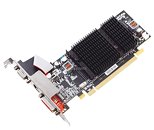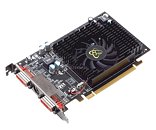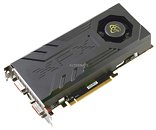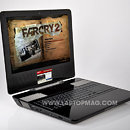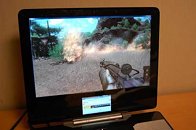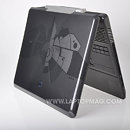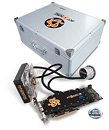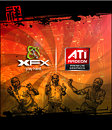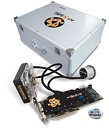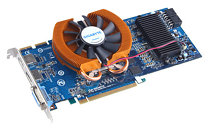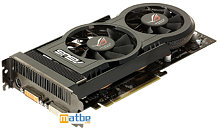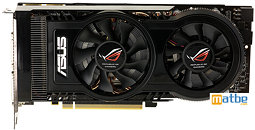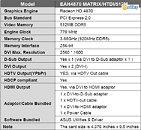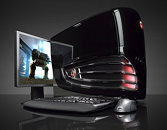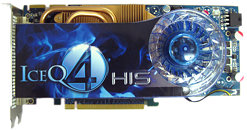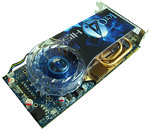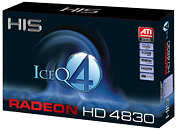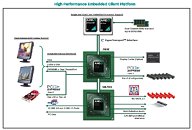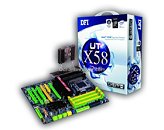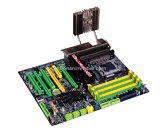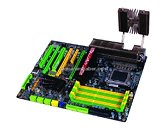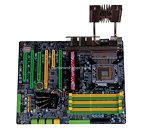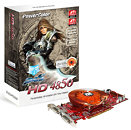
More XFX Radeon Series Graphics Cards Pictured
It does come as a surprise to us, that XFX is going to have a full-fledged non-reference design ATI Radeon lineup, barely a month into its official announcement of a tie-up with AMD. Pictured below are XFX Radeon HD 4350, Radeon HD 4650 and Radeon HD 4830. Ideally XFX will use a common design with its Radeon HD 4600 series cards. Both incorporate black-coloured PCBs, and the XFX colour scheme with the coolers.
The XFX Radeon HD 4350 (model: HD435X-YAH2) comes with a core clock speed of 600 MHz and 512 MB of DDR2 memory clocked at 1000 MHz. It is passively cooled and is low-profile friendly. The XFX Radeon HD 4650 / HD 4670 cards use reference AMD clock speeds. The Radeon HD 4850 card comes in two variants, HD465X-YAF2 (512 MB) and HD465X-ZAF2 (1 GB). Also pictured is the XFX Radeon HD 4830 512MB (model: HD483X-YDFC) that looks identical to the XFX Radeon HD 4850, pictured earlier.
The XFX Radeon HD 4350 (model: HD435X-YAH2) comes with a core clock speed of 600 MHz and 512 MB of DDR2 memory clocked at 1000 MHz. It is passively cooled and is low-profile friendly. The XFX Radeon HD 4650 / HD 4670 cards use reference AMD clock speeds. The Radeon HD 4850 card comes in two variants, HD465X-YAF2 (512 MB) and HD465X-ZAF2 (1 GB). Also pictured is the XFX Radeon HD 4830 512MB (model: HD483X-YDFC) that looks identical to the XFX Radeon HD 4850, pictured earlier.
